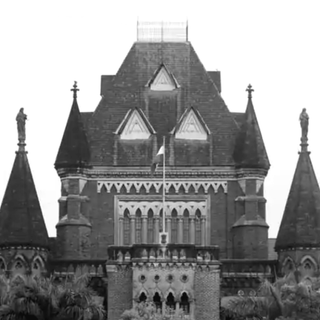
The Dalit Caste Identity of Hathras Victim Is Vital to Recognizing Her Rape as a Casteist Crime
This is not the first time dominant castes have used sexual violence as a means to wield power over Dalit women’s bodies.

On September 14th, a young woman in Hathras, U.P., belonging to the Dalit Valmiki caste was allegedly raped by four men belonging to an upper Thakur caste. The victim succumbed to her injuries, and on September 29th, the U.P. police cremated her body without her family’s consent after barricading the family inside their home.
Amid the outpouring of outrage on social media, the victim’s gender takes the spotlight, with news reports and prominent commentators calling her ‘Nirbhaya,’ referring to the December 2012 gang-rape and murder in Delhi that sparked nationwide protests against India’s pervasive rape and victim-blaming culture. However, the victim’s Dalit identity is either invisible in people’s expressions of anger and frustration, or deemed by some to be a distraction from the ‘real’ issue of a woman’s rape.
Yet, the victim’s Dalit caste identity is extremely important, considering rape and sexual assault are the most common forms of violence utilized against marginalized castes, according to a National Crime Records Bureau (NCRB) report, and because there has been a 25% increase in crimes against Dalits over the past decade. Uttar Pradesh, the state where the Hathras crime occurred, has repeatedly topped the list of states with heavy violence against Dalits, plus it has had a recent streak of brutal rapes and murders of Dalit women. The victim’s caste identity matters because it shines a spotlight upon India’s uncomfortable position as a casteist state and society that repeatedly terrorizes individuals deemed lower caste with violence, rape, and murder, while its justice system often looks the other way.
A hate crime, as it is generally understood, is an act of violence committed due to bias. There are no particular Indian laws dedicated to hate crimes in general, but there is a law dedicated to preventing atrocity against members of marginalized castes, including their sexual assault — the Scheduled Caste and Scheduled Tribe (Prevention of Atrocities) Act. All crimes (including this rape) perpetrated against individuals from Dalit castes must be viewed through the lens that they are — at the very least — possibly motivated by caste bias.
Though it is necessary to acknowledge that most rape victims are women and most rape perpetrators are men, looking at rape merely via that lens betrays a uni-dimensional view of how and why rape occurs. Rape is not always a crime perpetuated strictly by men against women, or a crime committed to satisfying sexual needs. Rape is a tool of power and a means to feel socially dominant through an expression of violent rage. Rape is also a tool of punishment, utilized to curb ‘deviant’ behaviors like coming out as queer, as a means to exact revenge, and as a means to exert strategic control over marginalized communities.
Dalit women exist at the lowest end of India’s gender, class, and caste hierarchies, and upper-caste individuals have used sexual violence against Dalit women as a means to “inflict political lessons and crush dissent and labor movements within Dalit communities,” according to Human Rights Watch. “These cases of extreme sexual violence are more examples of the dominant caste wielding power over Dalit women who are perceived as weak and vulnerable and available,” Manjula Pradeep, director of campaigns at the Dalit Human Rights Defenders Network, told The Guardian. “Dalit women are seen as impure and deprived when they access basic amenities but their bodies are also used as objects to take revenge on the Dalit communities and keep them oppressed. With more Dalits demanding their rights, these kinds of incidents…are increasing.”
India has a history of ignoring intersectionality in cases of sexual crimes against Dalit women. “A Dalit woman is unique and her experiences are largely different from not only upper-caste women but Dalit men as well,” writes human rights lawyer and research scholar Santvana Kumar for Feminism in India. The Bhanwari Devi case led to the creation of the Sexual Harassment of Women at Workplace (Prevention, Prohibition, and Redressal) Act, 2013. However, none of the courts that Bhanwari Devi approached for redressal prosecuted her assault via a caste lens. In fact, a sessions court judge actually remarked that the Gujjars could not have raped a Dalit woman at the cost of defiling their caste purity. She faced very specific violence due to her identity as a Dalit woman, but the courts only saw her as a woman, completely invisibilizing the caste-violence she had simultaneously faced.
Ignoring the Hathras victim’s Dalit identity is both erasing one of the most plausible potential motives for the crime and turning a blind eye to the impenetrable hold caste-centric patriarchy exerts over Indian society. The intersectionality of feminism demands that we look deeper into the root causes and contexts behind violent crimes perpetrated against marginalized women. Now more than ever, it is imperative that we tailor our asks for accountability, redressal, and social change to the actual needs of marginalized women rather than the narratives we assume for them.
Aditi Murti is a culture writer at The Swaddle. Previously, she worked as a freelance journalist focused on gender and cities. Find her on social media @aditimurti.
Related


ASHA Workers Protest In Bengaluru Due To Low Wages, PPE Shortages
